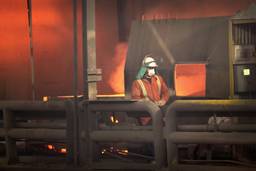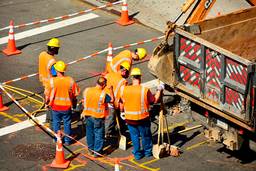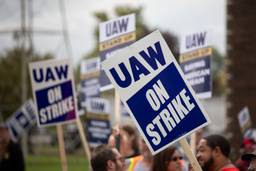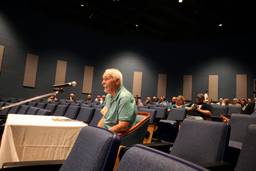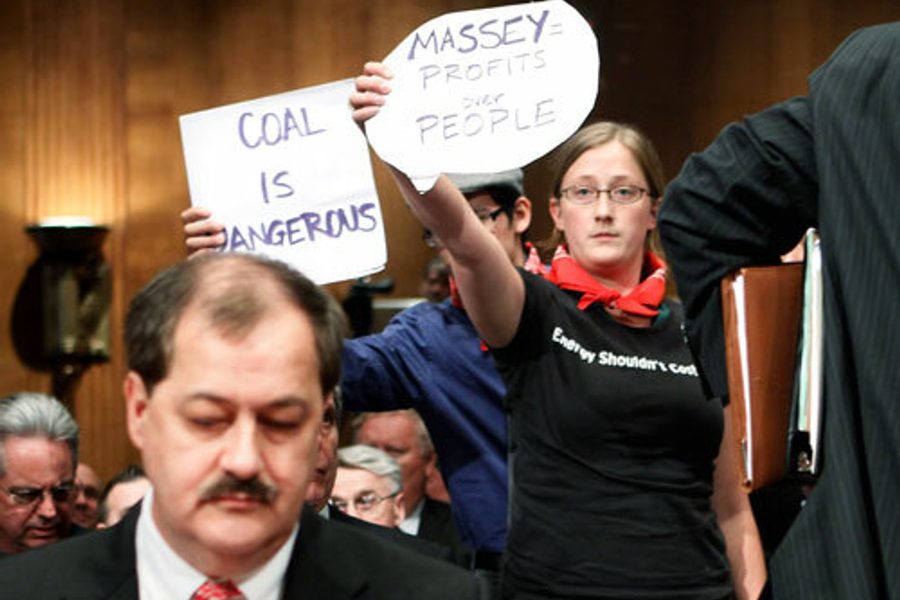
BP, Massey Energy and Tesoro all have hauled out plaques celebrating safety achievements to deflect allegations of corporate recklessness in the aftermath of explosions in April that killed 47 of their workers.
Though each of these corporations accepted awards for safety statistics, not one has taken responsibility for workplace deaths.
The disconnect between safety awards and dead workers has enabled these corporations to characterize the explosions as accidents, random events for which no one really is to blame, certainly not corporate officials who control conditions in workplaces. That’s why these pseudo-safety awards are so destructive.
The prizes congratulate corporations for reducing incidents such as slips and falls that injure workers to the point that they must miss work. Decreasing worker injuries is good, no doubt about it. But preserving workers’ lives is imperative. The corporate awards programs fail to recognize employers who successfully institute more complicated, costly and rigorous procedures called “process safety management” to eliminate workplace catastrophes that kill.
Awards for slip and fall reduction promote complacency. The plaques hanging in hallways say the oil rig or coal mine or refinery is super safe – so secure it’s worthy of commemoration. They create the illusion of protection in workplaces where process safety management hasn’t been properly implemented. The safety plaques are paper shields, easily immolated in explosions, along with the workers they beguiled.
Some BP executives actually experienced a little of that burn on April 20. A group of BP bigwigs was aboard Deepwater Horizon in the Gulf of Mexico when it exploded. They’d traveled out to the oil rig to celebrate a safety milestone. Workers on the rig had gone seven years without a lost-time accident – well, seven years without reporting one, anyway. Corporations routinely subtly and overtly discourage workers from reporting injuries. For example, companies grant cash awards for designated time periods during which no injury reports are filed and force mishap victims to wear distinctive clothing like orange vests so they get the blame – and not the corporation – for injury reports that cost entire crews their cash awards.
The BP executives escaped Deepwater Horizon with their lives. Eleven roustabouts and roughnecks on that day of safety celebration did not.
Just last year, the federal Minerals Management Service (MMS) gave BP and Transocean, the owner of the Deepwater Horizon rig, Safety Awards for Excellence –SAFE awards. MMS bestows these on offshore oil and gas corporations for “outstanding safety and pollution prevention performance.” Again this year, BP was a finalist for a SAFE award. After the Deepwater Horizon explosion, MMS postponed announcement of this year’s winners. Last year, the U.S. Occupational Safety and Health Administration (OSHA) presented BP Alaska with a three-year re-certification of its Star award, which recognizes safety performance.
All of that would lead workers to believe BP is a safe employer – not like the BP with a refinery in Texas City, Texas that blew up in 2005 killing 15 workers and injuring 170, the BP that OSHA slapped with its second largest total penalty ever — $21 million – for safety violations at Texas City that led to the massive explosion, the BP that OSHA hit with its largest ever fine — $87.4 million – last fall for failure over four years to comply with the terms of its settlement agreement to correct the potential hazards at Texas City.
No, the safety-award-winning BP must be different, a corporation that recognizes its responsibility to establish and conduct safe workplaces.
A study after the BP-Texas City explosion showed that one of the best ways to prevent such catastrophes is meeting the standards of process safety management. These use engineering and management techniques to continuously ensure that machinery and piping are in good condition, meticulously manage and record changes, and properly train workers. The concepts are not exclusive to refineries. They can be used to improve safety in other industrial processes as well.
The refinery industry accepted the process safety standards but hasn’t rigorously implemented them. The United Steelworkers union, which represents oil workers, met with oil corporations and the American Petroleum Institute (API), a trade group for drillers and refiners, in an attempt to write two new standards addressing leading indicators in the refining industry and worker fatigue. But the union abandoned the effort last fall because the industry was more concerned about image than safety.
Then, on April 2, an explosion at the Tesoro refinery in Anacortes, Wash. killed seven workers. Like BP, Tesoro is a safety award winner – but not for comprehensive process safety management. The National Petrochemical and Refiners Association (NPRA) has granted the Anacortes refinery numerous prizes over the years – “merit” and “achievement” and “gold” — including two last year. Tesoro notes on its web site that this recognition is for reducing “recordable injury rates”– the lost-time injuries that must be reported to OSHA.
NPRA doesn’t sponsor an award for corporations that improve process safety management. It’s trying to collect statistics on process safety from drillers and refiners, but participation is anything but compulsory. NPRA stresses that the information it receives on process safety will be collected on an aggregate level so it’s not specific to individual refineries, will be kept secret and will be used for benchmarking only. Clearly, it is striving to entice reticent refiners to participate.
Three days after the Tesoro tragedy, 29 workers died in an explosion in Massey Energy’s Upper Big Branch mine in West Virginia. Massey CEO Don Blankenship immediately began blaming God and the workers themselves for the catastrophe and citing Massey’s safety awards. In 2009, The National Mining Association and the U.S. Mine Safety and Health Administration (MSHA) gave Massey three “Sentinels of Safety” awards, the most any mining company had ever received in one year. These recognize, as the NPRA and MMS awards do, low levels of lost-time injuries. “At Massey Energy, we embrace our commitment to safety at all levels – from executive to miner. The Sentinels of Safety awards reflect the company’s dedication to safety at all of our facilities,” Blankenship said six months before the worst mining disaster in 40 years killed 29 Massey workers.
After two Massey miners suffocated in 2006, the corporation pleaded guilty and paid $4.2 million in criminal fines and civil penalties – the largest settlement in coal industry history — for willful violation of mandatory safety standards. By a count the United Mine Workers of America conducted, 52 people have been killed on Massey Energy properties in the past decade. UMWA President Cecil Roberts called Massey mines the most dangerous in America.
And yet, Blankenship touts Massey’s safety awards. Like BP and Tesoro.
The standards for these prizes must change to stop deluding workers and deceiving the public. No agency or association should ever again laud workplaces that are lax on meeting process safety management standards.
This article was originally published on the United Steelworkers blog.
